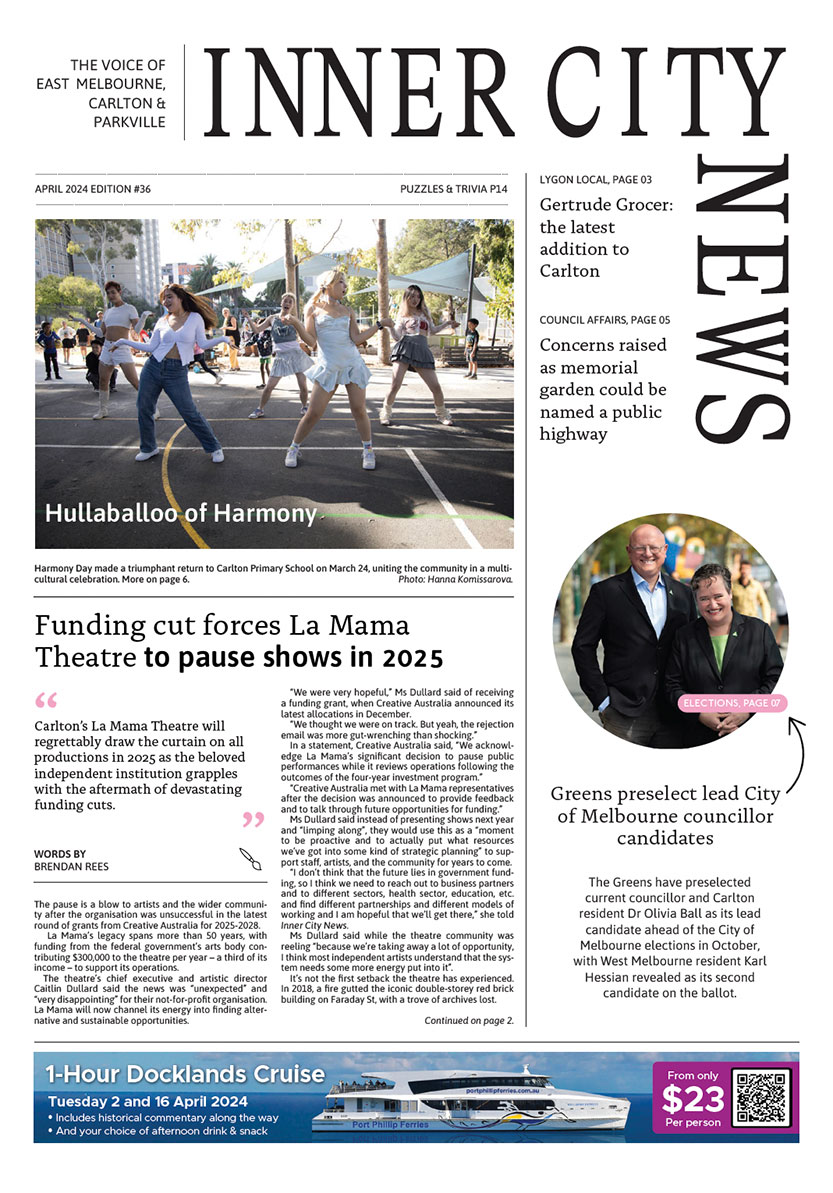Vernon Ransford: the elegant left hander
By Tim Holland
The holiday season is with us and top level cricket at the MCG makes its seasonal appearance in the East Melbourne area. The high point is the Boxing Day Test, this year being an Ashes series against England. The MCG was the place where Test cricket was born in 1877 and was also the venue of the first One Day International in January 1971.
A person who had a long-term connection to top level sport in the East Melbourne area was Vernon Ransford. He was an Australian Test cricketer who later became the chief administrator for the Melbourne Cricket Club.
He was born Vernon Seymour Ransford in South Yarra on March 20, 1885 to Henry and Lydia Ransford. He attended Yarra Park State School and lived just over Punt Road at 9 Moorhouse Street, Richmond. He attended Hawthorn College for his secondary education. After his marriage to Ethel Colina Macrow in April 1910 he and his wife lived at 28 Vale Street, East Melbourne on the corner of Berry Street overlooking the south-eastern corner of Yarra Park.
His family had an import business where he started his early working life.
At the time of his marriage Ransford had established himself as an opening batsman for the Melbourne Cricket Club and represented Victoria and Australia. It was a short stroll across Yarra Park from his front gate to the MCG. He has been described as “the first elegant left-handed batsman” and made a strong impression on the Ashes tour of England in 1909.
Ransford was also one of the players in the major player revolt that preceded the 1912 tour of England. Six of the leading cricketers, including Victor Trumper, Clem Hill and Ransford, clashed with the cricketing authorities about the touring arrangements and refused to go on the tour. A highlight of the dispute was an actual fist fight between Hill and the chairman of selectors in a Test selection meeting. Gideon Haigh records the fist fight lasted 20 minutes but the consequences for the relationship between players and officials resonated down the years. The Australian Cricket Board of Control asserted its power over the players in this dispute and that situation persisted until 1977 when the World Series Cricket initiative by Kerry Packer revolutionised the game giving the players much greater financial reward for their efforts.
The 1912 dispute together with the intervention of the First World War put an end to Ransford’s career in Test cricket at a relatively young age, but he continued for some years after the war for Melbourne and Victoria, ending his first class career with Victoria in 1925-26.
After the war Ransford continued to have a strong connection to Yarra Park in administrative capacities. When the position of secretary of the Melbourne Cricket Club came up in 1939, after the death of Hugh Trumble, Ransford was selected out of a field of 150 candidates. He had been a member of the MCC committee since 1913. A noteworthy point about the selection process was that Don Bradman was also an applicant and it has been reported that Ransford won the position over Bradman by the narrowest of margins in the vote of the committee members. It is intriguing to wonder what might have been in Victorian cricket if the much younger Bradman had been given the nod.
Assuming the position of MCC secretary in early 1939, Ransford soon found himself dealing with the wartime use of the MCG as a base to house hundreds of thousands of US and Australian service personnel. The Americans affectionately named the venue Camp Murphy after a senior USAF officer who died in Java. According to Ransford’s listing in the Australian Dictionary of Biography his “courtesy and friendliness” in his role as administrator of the venue led the Americans to refer to the base as Camp Ransford in his honour.
He held the position of MCC secretary until retiring due to ill health in 1957, shortly before his death on March 19, 1958, the day before his 73rd birthday.
Vernon Ransford was also a good footballer but did not play at the highest level. However, he was strongly connected to the Melbourne Football Club throughout his life. He was president of the club in the 1920s, and for many years was the club’s delegate to the VFL •
For more information [email protected] or emhs.org.au

Carlton language school championed by Ukrainian refugee




 Download the Latest Edition
Download the Latest Edition